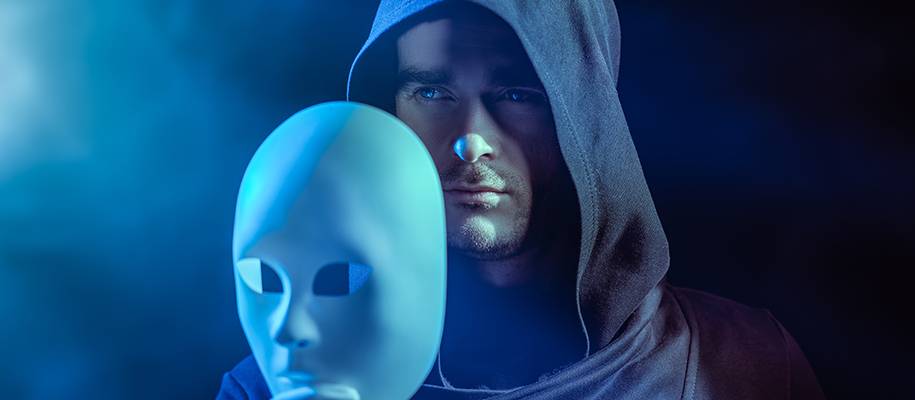Most colleges and universities have dozens—if not hundreds—of student organizations. Whether you’re into art and literature, are looking to make friends who share your political leanings, or have always dreamed of joining a sorority or fraternity, you can find a group that suits even the most specific of your interests. But did you know some groups are shrouded in mystery and spoken of only in whispers?
Secret societies have long had a presence on college campuses around the country. Though the history, traditions, and goals of each are unique, they all share at least one common trait: the mystique of utmost secrecy. Some of them keep their membership anonymous, and others go so far as to deny their society even exists.
While there may or may not be underground tunnels, passwords and handshakes, or mandatory cloak-wearing, there’s certainly something enigmatic—and even a little eerie—about these groups. Here’s a look at a few of the most mysterious collegiate secret societies in the US.
William & Mary’s The Flat Hat Club
William & Mary, a university in Williamsburg, Virginia, reportedly has at least three secret societies. Thomas Jefferson was a member of the school’s mysterious F.H.C. Society, which stands for fraternitas, humanitas, et cognito (fraternity, humanity, and knowledge). It was founded in 1750 and revived as the Flat Hat Club in 1916, and supposedly still exists to this day. Though little is known about the goings-on of the Flat Hat Club, its members' actions reportedly “seem to consist only of anonymous philanthropic acts that benefit William & Mary and people at the University.”
New York University’s Eucleian Society
Founded in 1832, the Eucleian Society at New York University was established to further the literary arts. Early members would have clandestine meetings every Friday afternoon to hold literary readings and debates. They even went so far as to create their own library and publish several literary magazines, which can now be found in the school’s archives. Today, membership and the society’s activities are as secretive as always, though Eucleians do make their presence known from time to time.
Related: Extracurricular Activities: The Big Secret to Winning at College Life
Yale University’s Skull and Bones Society
Perhaps the most famous of all collegiate secret societies, Skull and Bones was founded at Yale University in 1832. Just 15 Yale seniors are supposedly tapped to join each year, but the group stopped publishing its membership in 1971, so one can only speculate about more recent members. Some of the most famous confirmed Bonesmen historically include Secretary of State John Kerry; Henry Luce, founder and publisher of magazines such as Fortune and Sports Illustrated; James Jesus Angleton, former chief of the CIA’s Counterintelligence Staff; and former Presidents George H.W. Bush and George W. Bush.
University of North Carolina at Chapel Hill’s Order of Gimghoul
Not only does the University of North Carolina at Chapel Hill have a secret society, it also has a castle just off campus, where the group supposedly meets, that is steeped in its own mystery. As the legend goes, The Order of the Gimghoul, named after Gimghoul Castle, was founded in honor of UNC student Peter Dromgoole, who was supposedly buried on the property in 1833 after losing a duel for the woman he loved. Today, the society (if it does indeed exist) is exceedingly confidential but continues to dedicate itself to Arthurian chivalry in the modern day.
Related: Campus Ghost Stories: Beware of These School Spirits!
Wesleyan University’s Skull & Serpent Society
The Skull & Serpent Society at Wesleyan University was formed in 1865, with membership originally restricted to the officers of three of Wesleyan’s most prestigious fraternities. Rumors abound that the society still exists today, with some students reporting that they’ve received invitations to a nearby graveyard at night. While there aren’t many records of the society’s existence, the Wesleyan Argus, the college’s newspaper, has published information that speaks to its existence: an article diving into the school’s societies as well as an open letter from the Society itself when their alleged meeting place, known as “The Tomb,” was vandalized.
Cornell University's Quill and Dagger Society
The Quill and Dagger Society at Cornell University is a senior honor society that was founded in 1893. Though its existence is widely known and its members’ names are published regularly in The Cornell Daily Sun, its meetings and campus contributions are still kept under wraps. Restricted to notable upperclassmen, reportedly new members are tapped for initiation in the spring of their junior year or fall of their senior year.
Related: A Look Inside the Prestige: What Makes Ivy League Colleges So Special?
University of Virginia’s Seven Society
The University of Virginia is thought to have several secret societies, but The Seven Society is reportedly the most secretive of them all. No one even knows for certain when the society was formed, but its symbol first appeared in the 1905 edition of the student yearbook. The most popular legend speculates that the society was founded when eight students had planned to meet for a game of bridge and only seven showed up. Throughout the society’s history, members have only been revealed upon their death, when a Seven Society banner appears at the funeral.
Auburn University’s The Spades
The Spades were founded in 1915 at Auburn University in Alabama. Each year, 10 seniors are selected to join the highly exclusive society. Though originally only open to men, membership is reportedly now open to anyone. Its meetings allegedly take place in the woods, and they’re even rumored to be a college branch of the Illuminati. While the group’s true activities are largely a secret, the general purpose of the group is not. You can find a partial copy of The Spades’ constitution among other documents on Auburn’s website.
Washington and Lee University’s Cadaver Society
The Cadaver Society at Washington and Lee University was founded in 1957 and is strictly anonymous (although a recent podcast project from some W&L students might suggest otherwise). According to the school’s website, the Cadavers are a secret society of undergrads who appear after dark, clad in capes and hoods, and play pranks. Rumors abound about this society, from some believing members must be pre-med students to others hearing you need to be a campus leader in athletics or some other campus group.
Related: How to Turn Campus Leadership Roles Into Marketable Résumé Skills
These are just a handful of the many collegiate secret societies—that we know of. There could be many more out there with anonymous members meeting by candlelight in caves and castles and underground tunnels, partaking in age-old traditions, and speaking in whispers as the outside world is none the wiser. And who knows? If you attend one of these prestigious institutions, you could be tapped as their next inductee!
Want to know another secret? You can explore a ton more unique aspects of college life using our AI-Powered College Search tool.







